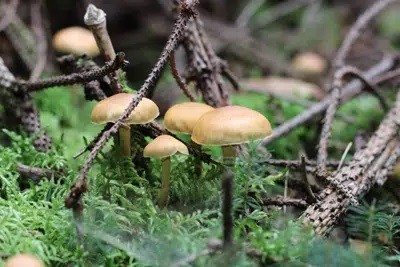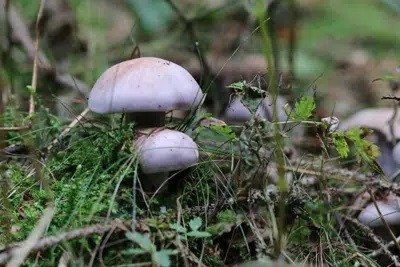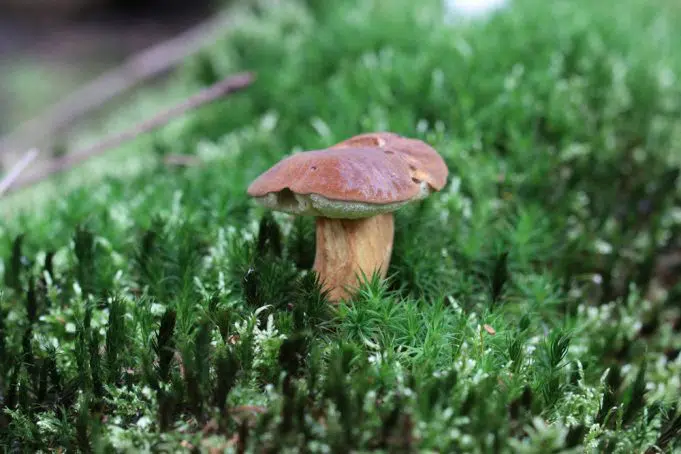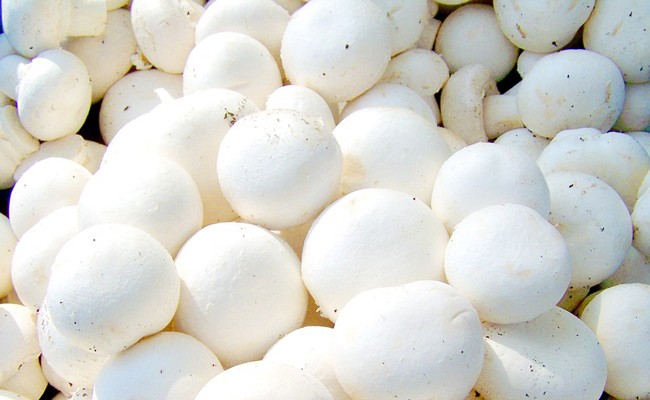If you discover brown fungi on your lawn, you don’t necessarily have to do anything about it. This is because many fungi provide good soil quality with their decomposition products. Sometimes, however, the fungi are poisonous, so it is important to pick them off and take a few measures to prevent a new infestation. Usually, the mushrooms need certain site conditions to grow. If you change the good growing conditions and strengthen the lawn, the fungi will no longer be able to survive over time. However, this does not happen overnight, but requires patience and perseverance.
Contents
Fungi in lawn – growth
Every gardener knows that fungi can cause diseases on plants. But this is usually the invisible, lower fungi are responsible. However, here we are talking about the larger fungi with clearly visible, brown or white fruiting bodies (stalk with hat), which suddenly appear on the surface of the earth. Fungi are among the oldest organisms on earth. What we see in the lawn is not the fungus, but only its fruiting bodies, which serve for reproduction. In the soil, the actual fungus forms a dense network of long cells strung together: the mycelium. This mycelium is usually located near the surface in the soil or other carrier medium, such as rotting wood.
Propagation
If conditions are favorable for the fungus, i.e. moist and warm, it forms fruiting bodies, which then appear on the surface. Depending on the species of fungus, this fruiting body can have different shapes and colors. The fruiting body serves only to propagate and spread the fungus. mushrooms use two techniques:
- the actual fungus in the soil (mycelium) opens up new areas
- the fruiting bodies form spores
The spores are extremely small and light, so that they are carried far away by even the smallest air movements. The spores form in the lamellae on the underside of the cap (umbrella).
What conditions promote fungal growth?

Fungi do not have chlorophyll like plants, which they can use to perform photosynthesis to supply themselves with energy. Fungi therefore specialize in utilizing organic carbon compounds produced by higher plants or animals. Most fungi exclusively colonize dead tissue such as:
- dead leaves
- dead wood
- remains of lawn grasses (lawn felt)
Tip: Fungi make an important contribution to nutrient cycling by breaking down biomass
Location
Lawn thatch consists of dead (or mown) blades of grass, dead roots and shoots of grasses. It provides an ideal breeding ground for fungi. Most fungi require moist site conditions. In this case, lawn thatch is ideal because it holds moisture well in the soil. Rotten plant remains provide the best conditions for fungi to grow.
- moist soil that dries poorly
- semi-shaded to shaded location (sometimes full sun)
- rotten materials under or on the surface of the soil
Are fungi harmful to the lawn?
The vast majority of fungi have no effect at all on living lawn grasses. All the gardener sees of them is the fruiting body appearing among the grasses for a short time once a year. Other species of fungi release substances, such as nitrogen, as they break down the biomass. The nitrogen acts as a fertilizer on the lawn. Therefore, increased lawn growth is often evident in the areas around the fungi. In summer, the fungal growth in the soil can cause the entire soil to be unable to adequately absorb water. In the worst case, severe drought can then cause the grasses on the lawn to die.
What kind of fungi are we talking about?
Among the many types of fungi that can be found on a lawn, some are quite rare specimens. There are widespread mushrooms, sometimes edible mushrooms and some poisonous species of mushrooms that can grow on a lawn in good conditions.
- Düngerling (Panaeolus): 15 species, mostly with conical, brownish or grayish cap (1-1.5 cm wide) on 6 to 10 cm long, fragile stem, poisonous
- Hallimasch (Armillaria): brownish to honey-yellow cap, depending on species 3 to 10 cm in diameter, grows on up to 20 cm long stalk, also colonizes living conifers, raw poisonous
- poisonous Galerina (Galerina marginata): brown cap up to 5 cm wide, flattened shape, stalk with white base, poisonous
- and many other species
Control
If brown fungi appear on the lawn, the call for their control usually follows automatically. However, effectively eradicating fungi is not a simple undertaking. Chemical control agents are generally not approved against fungi, so the gardener often has no choice but to come to terms with them. As long as the fungus can simply grow, it usually poses no danger. It is only when it is eaten that it becomes dangerous. This is especially critical when animals or small children are on the lawn.
It is best to simply mow the lawn at short intervals when the fruiting bodies appear. In between, it is advisable to rake off the fruiting bodies with a fan rake. Gloves should be worn when removing them in case they are poisonous specimens. In addition, always dispose of the remains in the household trash so that the fungal spores do not spread to the compost.
Eliminate waterlogging
Fungi require moist soils. Infestation is favored above all by a buildup of water in the soil. It is important to allow the lawn to dry out thoroughly whenever it has rained or dew forms on cool days. If lawn clippings are not removed or are inadequately removed when mowing, this will prevent the water from evaporating. In addition, if the site is naturally very moist and the soil is heavy, optimal conditions for fungal growth will form.
Avoid lawn thatch
Anything in the lawn that promotes the formation of lawn thatch should be avoided. The thin layer of dead blades and cut grass promotes the growth of the fungus in the soil. If the lawn felt is already present, it is essential to remove it. This deprives the fungus of its food base. In case of prolonged drought, the lawn should be watered regularly. This not only keeps the grasses viable, but also the bacteria in the soil that break down the felt.
Scarifying
In order to eliminate heavy matting of the lawn and prevent new matting, the lawn should be scarified several times a year as needed. During scarification, the dead grass and old grass clippings are cut vertically with the help of rotating blades and then removed. Grass growth is most pronounced between April and June, so dethatching should be done more frequently, especially during these months.
Aerating and sanding
For good lawn growth, good permeability of the turf to water is necessary. At the same time, these conditions are unfavorable for the growth of the fungus. Especially frequent loading of the lawn by playing children or other footsteps compacts the soil and makes it susceptible to waterlogging. This compaction makes mechanical measures necessary. Aerification involves making fine holes in the soil with the help of hollow spikes. Thin soil cores about five to seven centimeters deep are cut out and left on the surface of the lawn. In a second step, this soil must then be removed. In practice, it is advisable to carry out this measure about twice a year. The resulting holes are filled with sand for better drainage.
Tip: When sanding, it is important that all holes are completely filled with sand. This is usually only possible with a special brush and fine and, above all, very dry sand
Remove dead wood
If you find dead roots or dead wood in the soil under the lawn, other pests in the soil can also be triggers for a fungal infestation. In this case, you should check the areas that are infested with brown fungus for small holes in the soil. If you find them, the soil will need to be dug up generously to locate cavities where beetles, larvae or other pests may be residing. Mole crickets are often the actual cause of fungal infestations.

Deficiency symptoms
If wetness and vermin infestation can be ruled out for the many rotting plant debris, the soil may also be deficient in nutrients or adequate aeration. Most plants can not grow in a garden soil of very poor quality. Their roots slowly die and create ideal conditions for fungal attack. Often a deficiency symptom can be recognized by the formation of so-called witch rings. Here, the fungi are arranged in circles and the fungal rings are lined with darker colored turf. The lawn around the witch rings grows better than in other places because the fungi secrete certain nitrogen compounds (ammonium compounds), which act as fertilizer for the lawn. About 50 different species of fungi can produce this type of damage. Great care must always be taken when removing fungi, as not only can they be toxic, but they will spread their spores if shaken or touched.
- Dig up the soil around the mushroom nests
- remove the soil in the immediate vicinity as well
- take out any dead plant parts in the soil
- fill the holes with sandy humus
- loosen the soil under the lawn
- sow new grass in the coming spring
- witch rings
The fruiting bodies of many fungi, such as the carnation witch, often appear on the lawn in a circular arrangement. These circles can grow up to several feet across. In these places, the grass in the lawn grows much stronger and also has a darker color. The reason for this is the fungi. They grow outward from their original location because they have used up their food base. As the fungus spreads out to all sides, the ring-like appearance is created. Each year the ring grows a little larger. These mushroom rings are also called elf rings or fairy rings. Fairy rings have been found that are several kilometers in diameter and are many hundreds of years old.
Conclusion
Brown fungi in the lawn may appear unsightly, but in most cases they do not pose a threat to the lawn. Only in cases where animals or small children are present, it is essential to remove them. The best way to do this is with regular mowing and collection. To fight the fungus is very difficult, because the visible parts are only the fruiting bodies. The actual fungus is hidden in the soil as a web.



